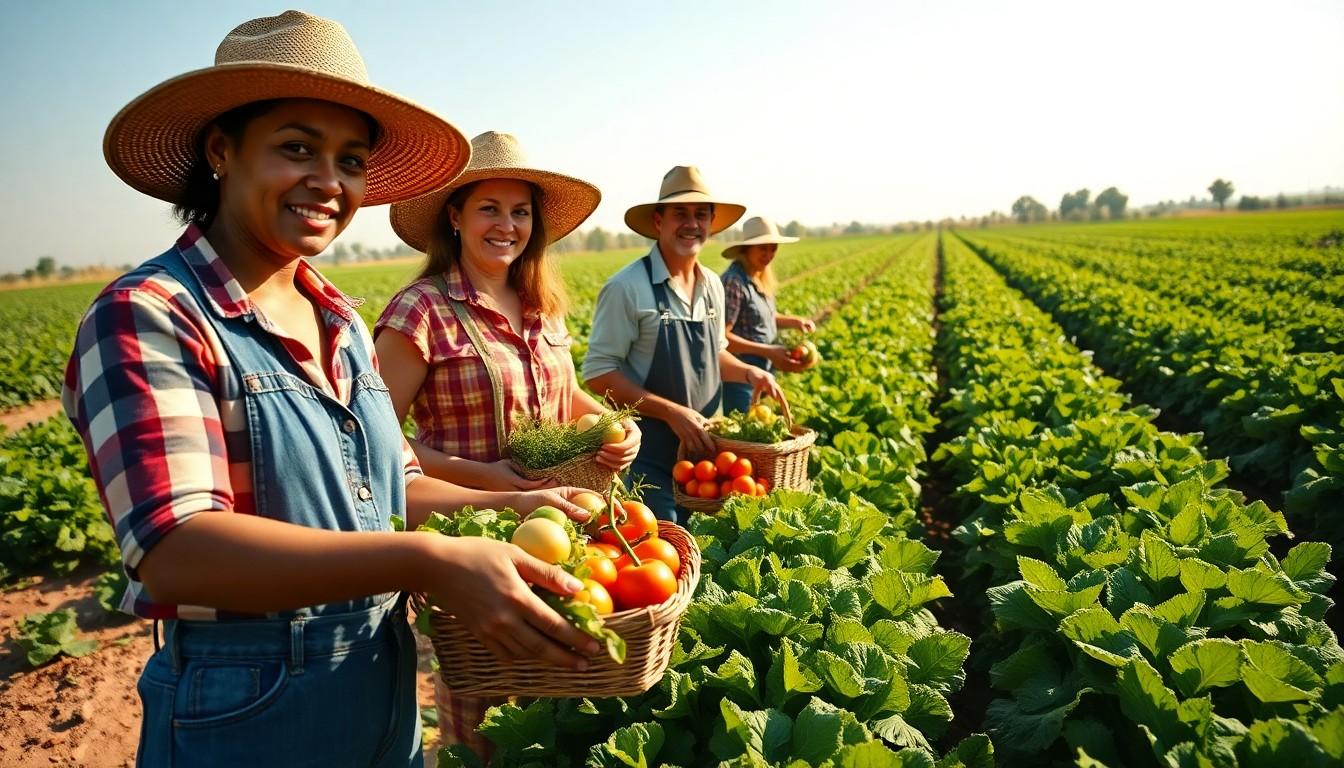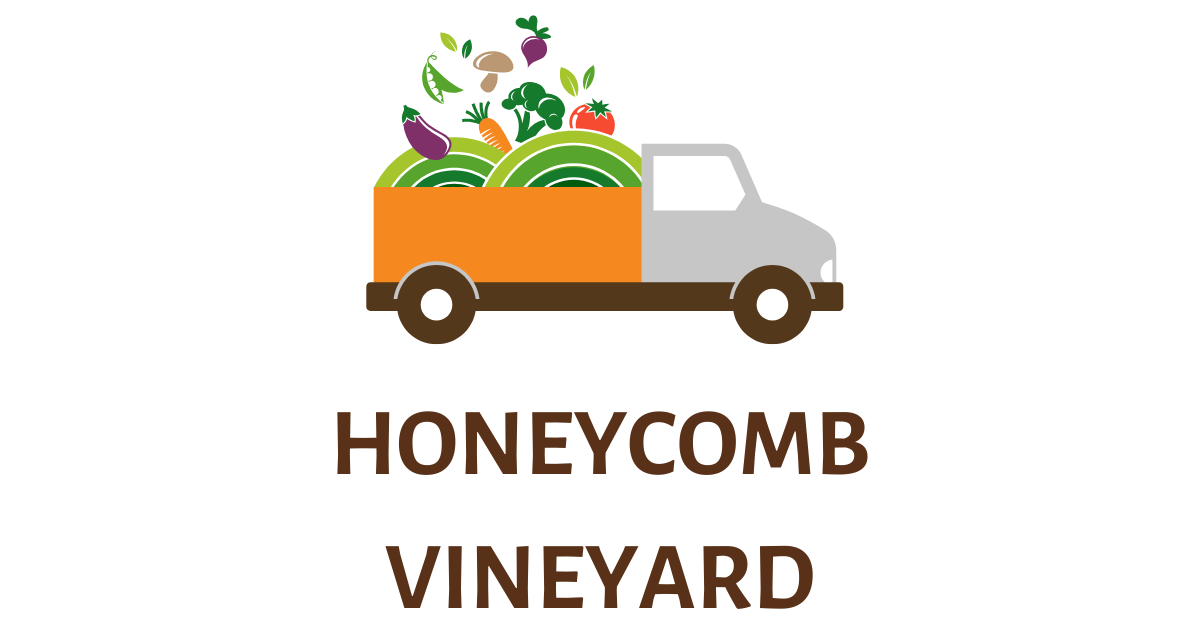The Best Fluffy Pancakes recipe you will fall in love with. Full of tips and tricks to help you make the best pancakes.

What is Farm-to-Table Technology? Discover Its Benefits for Fresh, Local Food
In a world where food often travels farther than a celebrity on a world tour, farm-to-table technology is here to save the day—and your dinner plate. This innovative approach connects farmers directly with consumers, ensuring fresher produce and a clearer conscience. Imagine biting into a tomato that didn’t just arrive from a distant land but was plucked from the vine just hours before. Sounds like a foodie’s dream, right?
What Is Farm-to-Table Technology?
Farm-to-table technology refers to the systems and practices that facilitate the direct connection between farmers and consumers. This technology streamlines the supply chain, reducing the distance food travels from the farm to the table. By utilizing apps, websites, and other digital tools, consumers access fresh produce straight from local farms.
Transparency is a core component of farm-to-table technology. Producers share information about farming practices, ingredients, and sourcing, enabling consumers to make informed choices. This transparency promotes trust between consumers and farmers, which fosters a sense of community around food.
Data tracking plays a crucial role in farm-to-table initiatives. Many platforms allow farmers to monitor crop health, yield, and harvest times, which aids in planning production based on demand. Consumers also benefit from knowing the origin of their food, enhancing their connection to the agricultural process.
Sustainability remains a significant advantage. By sourcing ingredients locally, farm-to-table technology minimizes transportation emissions and supports local economies. Restaurants and markets that embrace this approach contribute to a more sustainable food system, offering seasonal menus that respond to available produce.
Collaborative efforts further enhance farm-to-table technology. Farmers, chefs, and consumers work together to create innovative dishes, encourage local eating, and raise awareness about seasonal foods. These collaborations often lead to educational events, enhancing the overall farm-to-table experience for the community.
Key Components of Farm-to-Table Technology

Farm-to-table technology integrates various components that enhance food quality and sustainability. It prioritizes practices that benefit both producers and consumers.
Sustainable Agriculture Practices
Sustainable agriculture practices form the backbone of farm-to-table technology. By utilizing crop rotation, organic farming, and water conservation techniques, farmers enhance soil health and biodiversity. Reduced reliance on chemical pesticides supports environmental health while promoting natural ecosystems. Local farmers often adopt these methods to produce high-quality, nutritious food. Consumers value these practices, as they emphasize ethical consumption and food quality. By engaging in sustainable practices, farms contribute to a healthier planet and foster community connections.
Supply Chain Transparency
Supply chain transparency plays a crucial role in farm-to-table technology. This approach enables farmers to share detailed information about their growing practices and product origins. Consumers gain access to data regarding pesticides, harvesting methods, and overall farm operations. Awareness of food sources builds trust between producers and consumers, creating stronger community ties. Enhanced transparency encourages consumers to make informed decisions and supports ethical consumption. Additionally, technology, such as apps and websites, simplifies communication, ensuring that both parties remain informed and engaged.
Benefits of Farm-to-Table Technology
Farm-to-table technology provides numerous benefits that enhance both the consumer experience and the agricultural community.
Improved Food Quality
Farm-to-table technology significantly increases food quality by ensuring fresh produce reaches consumers quickly. Locally sourced ingredients maintain their nutritional value, flavor, and texture, providing a superior culinary experience. Farmers often harvest crops at peak ripeness, which leads to tastier options for consumers. Technologies like tracking apps allow farmers to monitor and optimize their harvests based on real-time demand. With immediate access to fresh products, chefs can create innovative dishes that showcase seasonal produce. The result is not just fresher meals, but also a broader range of flavors available regionally.
Enhanced Consumer Trust
Farm-to-table technology fosters consumer trust through transparency in the food supply chain. Producers share vital information about their growing practices, allowing consumers to understand where their food comes from. Access to this data encourages informed decisions aligned with personal values. Engaging storytelling from local farmers adds a personal touch, strengthening the connection between consumers and their food sources. Chefs and restaurants often highlight their sourcing practices, showcasing partnerships with local farms. As trust builds, consumers feel more confident supporting these businesses, thereby reinforcing community ties and enhancing local economies.
Challenges in Implementing Farm-to-Table Technology
Implementing farm-to-table technology presents several challenges. Cost and accessibility factors significantly impact consumer participation and accessibility to local produce.
Cost and Accessibility
High startup costs can deter farmers from adopting new technologies. Farmers may invest in software, apps, or infrastructure to implement farm-to-table systems. Prices for organic equipment often exceed traditional options, pushing smaller operations to the margins. Consumers also face rising costs, which can limit access to locally sourced produce. Geographic barriers further complicate matters; rural areas may lack delivery services or nearby markets. Collaborative programs can mitigate costs, though they require a community investment. Engaging local government and organizations can support reducing financial burdens and increasing access.
Technological Limitations
Technological barriers hinder the effectiveness of farm-to-table initiatives. Internet connectivity issues persist, especially in rural regions, leaving some farmers unable to utilize digital tools fully. Training and education become necessary to ensure all stakeholders can utilize technology effectively. Many farmers may lack familiarity with data tracking systems, which impacts their ability to connect with consumers. Additionally, existing platforms may not accommodate specific regional needs, limiting flexibility. Addressing these limitations involves investing in accessible training programs and developing adaptable software solutions tailored to diverse farming contexts.
Promoting Sustainable Practices
Farm-to-table technology is reshaping the way consumers connect with their food. By fostering direct relationships between farmers and consumers, it enhances the freshness and quality of produce while promoting sustainable practices. This innovative approach not only supports local economies but also empowers consumers to make informed choices about their food sources.
As the movement grows, overcoming challenges like high startup costs and technological barriers will be crucial. Collaborative efforts among stakeholders can pave the way for broader adoption of these technologies. Ultimately, the farm-to-table model represents a significant shift towards a more transparent and sustainable food system, benefiting both the environment and the community.
